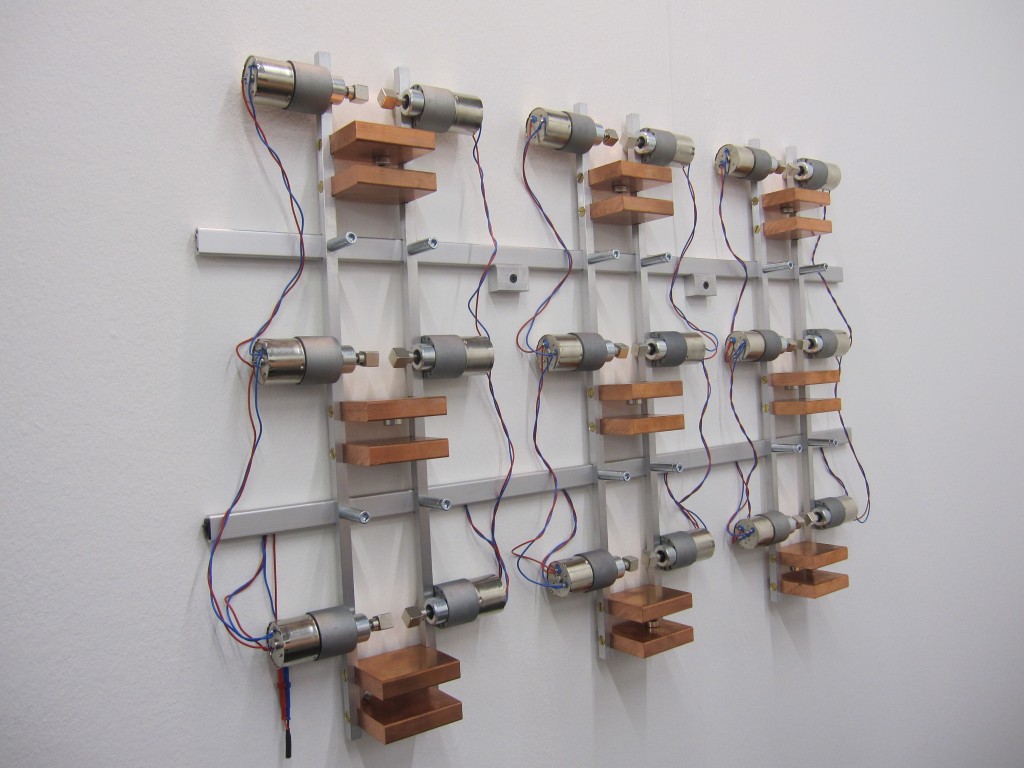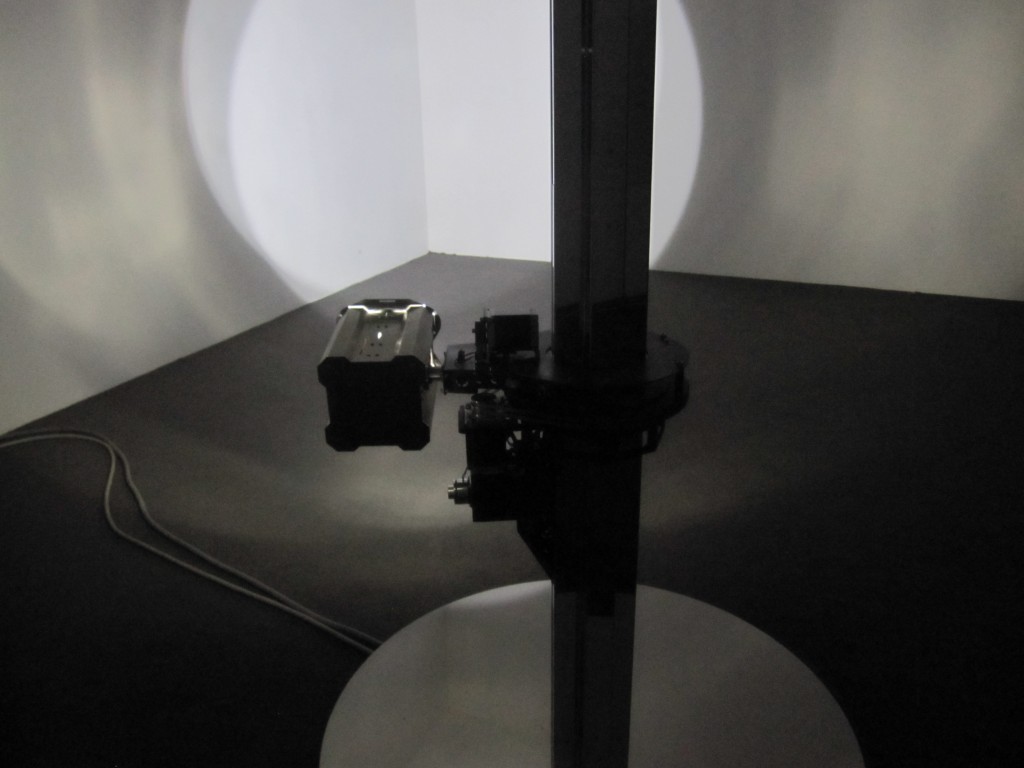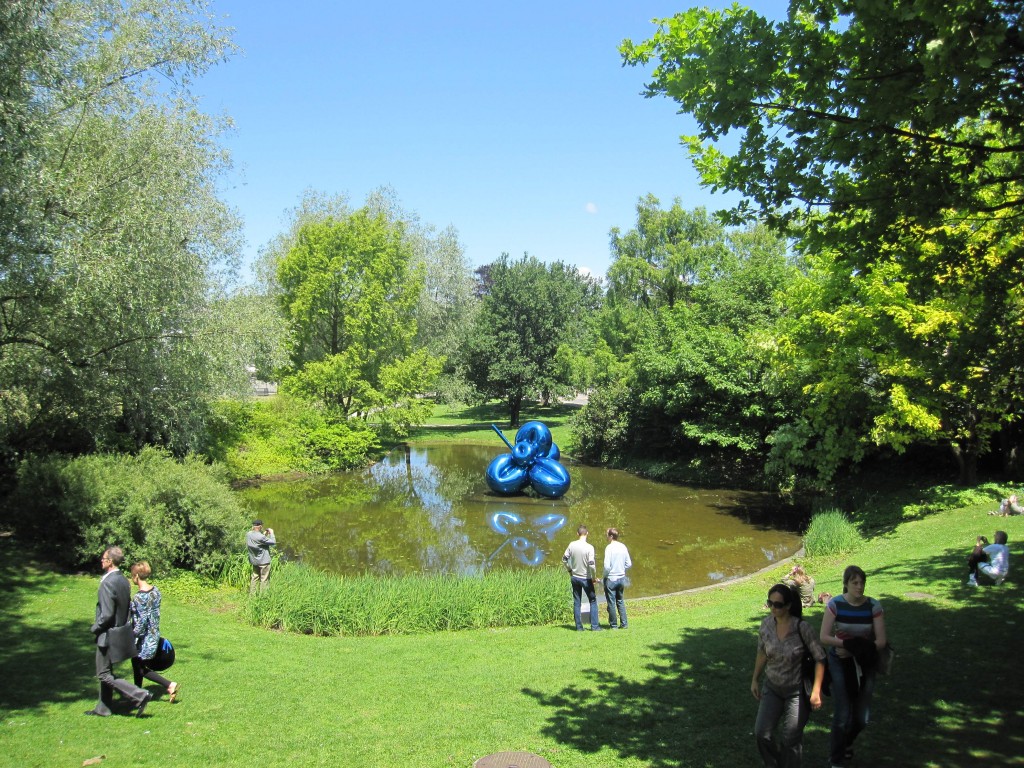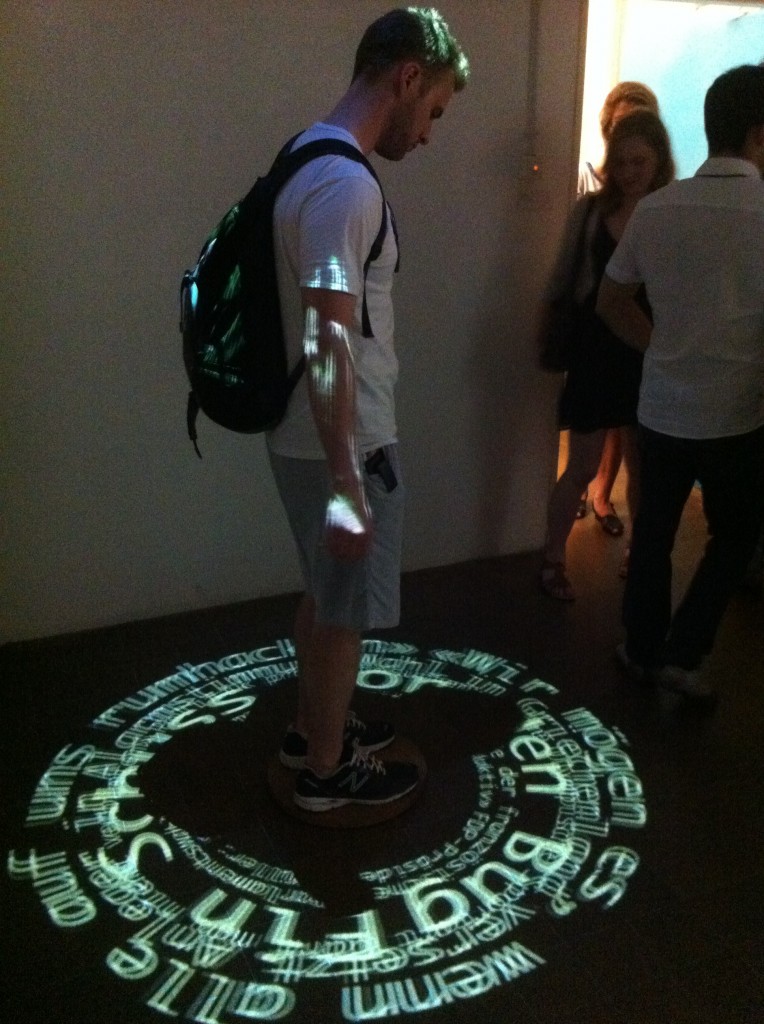Every June in the city of Basel, nestled in a corner of Switzerland that kisses both France and Germany, an explosion of art occurs. From Volta, Art Basel, Liste and various local shows, there is an overwhelming number of artworks. I was naïve in thinking two days was enough time to see all I wanted.
Although Art Basel is the main attraction, my journey started at Volta 8, an art fair for those artists who are said to be emerging and cutting edge. As is often the case, there are ups and downs in this fair, but one specific artist caught my eye. Pe Lang, represented by Galerie Mario Mazzoli from Berlin, was showing works from his moving objects series. Each one was mesmerizing. Mazzoli uses a series of motors and magnets to animate small objects, making it intimate and alive. The objects, which include metal bearings and rings, move as though it were magic—though I suspect magnetism was behind the act.

The three events run a free shuttle, which I took to Art Basel. Unlike Volta, which was filled with interesting artists new to most of the art world and certainly myself, Art Basel was like opening up an art history textbook and crawling in to take a stroll through the pages. Works I couldn’t image being for sale where there—and selling! Pieces from Jenny Holzer to Picasso, Rothko to Louise Bourgeois, and even Damien Hirst were there on display, not to mention Andy Warhol prints at every turn. The gallery showcase became quickly overwhelming.
In the madness of the crowd, I was lucky to come across Art Unlimited. This is the space for oversized art objects and installations. Apparently this was the first year that Art Unlimited was shown as a well-conceived exhibition, as opposed to a handful of artworks thrown into a space. Art Unlimited, though still packed, was calm in comparison to the gallery spaces. It wasn’t until after reading about Art Basel in a newspaper a few days after the event, that I became aware that the works in Art Unlimited were also for sale.
My favorite piece at Art Unlimited was by Olaf Nicolai. It was silent and still as I entered his exhibition space. In the middle of the dark room there was a mirrored pole and platform with a spotlight affixed to it. Somehow the spotlight projects two circles of light that overlap each other. Then, all of a sudden the spotlight whizzes up and down and around the pole, seemingly out of control, projecting its light every which way it pleases, as if it were searching for something. The result is a lightshow with a loud mechanical sound for a soundtrack, almost like an amusement park ride. It is visually compelling. As the light hits the base of the pole it reflects off the mirror and flashes up on the ceiling, animating the entire room all at once. After a few minutes of showing off, the spotlight suddenly stops and remains still. I remained in the room to observe. It sits still as if the sculpture had never moved. Sometimes people that walk in to see the work, walk out before the sculpture comes alive, completely unaware of the dance it is about to perform. I guess that is one downfall of Art shows like this; you see more art, but do not have the time to properly experience most of it.
The spotlight show starts up anew: up, down, around and back. As far as I can tell the pattern of movement is random, as are the intermissions. I read a little on the work, Samani. Some Proposals to Answer Important Questions, 2008. I admire more the work than the published explanation, so I continue to take in the show. Once it stops again I head out of the room. Sadly, my leavings seems to start a trend, and several more people who have just entered leave after me, without giving the spotlight a chance to entertain them. I supposed it is a reminder that some artworks, although great, are not suited for specific viewing types.
The next day I set out to see a local exhibition to experience something a little different than the art fair atmosphere: a solo show of Jeff Koons at Foundation Beyeler, located on the outskirts of Basel. Although I have seen some of Jeff Koons work before, either in the context of a pop art show or as public art, there is something more delightful about looking into one of Koons’ metallic balloon figures and seeing yourself surrounded by even more Koons. The show included both famous and lesser known sculptures, as well as paintings highlighting his ‘celebration’ series. The show excluded some of his more risqué work, possibly an overt decision by the gallery, or another theory of mine is it was Jeff Koons himself who omitted the work, because the series “Made in Heavan” features his porn star ex-wife. Either way it was a fantastic display of Koons’ work.
Walking through the Foundation Beyeler, it was quite interesting to see the juxtaposition between the Koons exhibit and the gallery’s equally impressive permanent collection. Almost always in sight were Mondrian’s squares, Barnett Newman’s zips and Monet’s lilies. Next to Koons’ kitsch makes me wonder what those artist’s would think. We ended our tour with an option to purchase a Koons work in the gift shop, reminding me of the Art Basel and Volta experience of yesterday. As we walked outside, we were confronted with one last Koons, the Balloon Flower. Glittering in the sun, hovering above a pond at the rear of the gallery’s beautifully manicured grounds, in a miniature valley where all the hills around dip towards the water.
It is hard to tell if it is gravity pulling you down the hill, closer to the sculpture, or the sculpture itself. It is only a tease however, as the large glossy sculpture is just out of the viewer’s reach, protected by a moat of water, daring the viewer to touch it. Unlike it’s red twin in New York City, which I had walked right up to, leaned on, and photographed my reflection in, this one is not accessible. Instead, it continues the theme of a gallery even outside the white walls. “Do not touch.” It sparkles and shines so much that the glint seems to transfer into its reflection in the water. When you look elsewhere, a blue haze remains in your eyes for several seconds. It is as though the sparkles have engrained themselves in your retinas.
The final stop of the trip was Liste, Basel’s “young art fair.” Although the rooms were less busy and the art presumably priced much lower, the ideas and fresh perspectives seems richer. My European tour was about seeing works and festivals that I had read about in art history and theory classes, but somehow I forgot to pay attention to what is new, up and coming and really just beginning. It is great to see the past and experience the hype in person, but if you are only looking back, you won’t be able to continue forward. And there were certainly a few gems on display.
In particular, I know I will be looking out for Timo Toots in the future. The work I saw titled Media Bubble (2008) was at first glance a motionless plate on the floor. To interact with the work, the viewer must stand on the plate and rotate it using their body. As the plate and viewer begin to spin, real-time news headlines from four different websites appear, projected in a circle around the moving viewer. Overlapped on each other, it was hard to read, but as you spun, they did too. Stopping would only result in the titles slowly disappearing, until nothing is projected. Above all the other wonderful shows in Basel, Liste inspired me the most and was definitely the highlight of my research trip through Europe.
Tags: Art Basel, art fair, Field Trip, Jeff Koons, switzerland, travel


